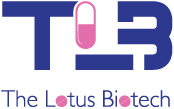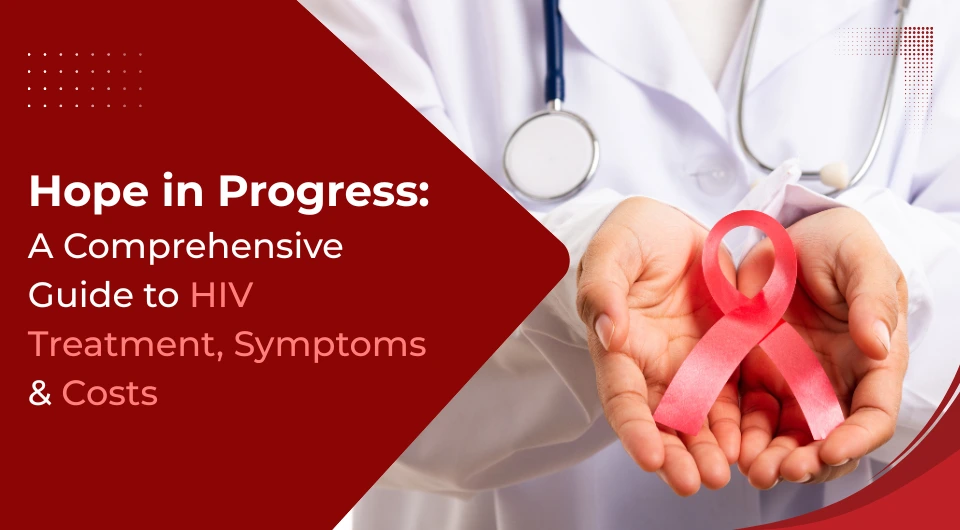In recent years, the landscape of HIV treatment has evolved dramatically, offering hope, improved health outcomes, and a near-normal life expectancy for those living with HIV and AIDS. Despite this progress, many people still carry questions, fears, and misconceptions around the virus, the available HIV/AIDS treatments, and the realities of living with a sexually transmitted infection like HIV.
Whether recently diagnosed, supporting a loved one, or simply seeking awareness, this blog offers a detailed look into the diagnosis of HIV/AIDS, available treatments, costs, symptoms, and the new horizon of living with undetectable HIV.
Understanding HIV and AIDS: What’s the Difference?
HIV (Human Immunodeficiency Virus) attacks the body’s immune system, specifically the CD4 cells (T cells), making it harder to fight infections. If left untreated, HIV can lead to AIDS (Acquired Immunodeficiency Syndrome), the final and most severe stage of the infection.
HIV, or Human Immunodeficiency Virus, is the virus that weakens the immune system, while AIDS, or Acquired Immunodeficiency Syndrome, is the most advanced stage of HIV infection, where the immune system is severely compromised. Without treatment, HIV can progress to AIDS.
However, thanks to significant advancements in HIV treatments, reaching the AIDS stage is no longer inevitable.
What Are the Symptoms of HIV?
The early symptoms of HIV can often be mistaken for flu-like illness. These usually appear 2-4 weeks after exposure. The clinical manifestation of HIV is generally understood by the three stages of HIV, i.e.,.
| Stage | Name | Symptoms |
| Stage 1 | Acute Infection | – Fever
– Chills – Rash – Night sweats – Muscle aches – Sore throat – Fatigue – Swollen lymph nodes – Mouth ulcers |
| Stage 2 | Clinical Latency | – Usually, there are no symptoms
– Virus still active and multiplying at low levels |
| Stage 3 | AIDS (Late-stage HIV) | – Rapid weight loss
– Recurring fever or profuse night sweats – Extreme and unexplained tiredness – Swelling of lymph glands (armpits, groin, neck) – Diarrhea lasting more than a week – Sores in mouth, anus, or genitals – Pneumonia – Red, brown, pink, or purplish blotches on or under the skin, or inside the mouth, nose, or eyelids – Memory loss, depression, and other neurologic disorders |
However, as the virus progresses, the symptoms might disappear for years, making early testing vital. When the immune system becomes severely damaged, undetectable symptoms of HIV may emerge in the form of opportunistic infections, rapid weight loss, and chronic illnesses.

Test Kits for Early Detection of HIV/AIDS
Getting tested is the first step toward managing HIV. Modern HIV test kits offer fast and discreet results. These home-use kits are now widely available and can detect HIV antibodies through a simple finger prick or oral swab.
For conclusive results, especially in recent exposures, lab-based tests are recommended. If diagnosed early, prompt treatment can stop the progression and lead to a state where the virus is undetectable — which means the virus is no longer transmissible through sex.
HIV Treatment: What You Need to Know
The cornerstone of modern HIV/AIDS treatments is Antiretroviral Therapy (ART). ART doesn’t cure HIV, but it significantly reduces the viral load in the body, improves immune function, and prevents transmission.
Goals of HIV Treatment:
- Achieve undetectable HIV levels
- Improve quality of life
- Reduce the risk of transmission
- Prevent progression to AIDS
Types of HIV Treatments Available
Most HIV treatments include a combination of medications from different classes to suppress the virus effectively. Standard drug classes include:
- NRTIs (Nucleoside Reverse Transcriptase Inhibitors)
- NNRTIs (Non-Nucleoside Reverse Transcriptase Inhibitors)
- PIs (Protease Inhibitors)
- INSTIs (Integrase Inhibitors)The exact combination depends on individual health profiles and coexisting conditions.
Side Effects of HIV Medicine: What to Expect
Like most chronic treatments, ART can have side effects. These vary from person to person and often decrease over time. Newer HIV medications have minimized many of these effects, and your doctor can help manage them effectively.
Common side effects of HIV medicine include:
- Nausea or diarrhea
- Fatigue
- Headaches
- Sleep disturbances
- Mood changes
- Lipodystrophy (body fat changes)
HIV Undetectable: What Does It Really Mean?
One of the most groundbreaking discoveries in HIV research is the U=U principle: Undetectable = Untransmittable. People living with HIV who maintain an undetectable viral load through consistent ART cannot transmit the virus sexually.
This has shifted not only treatment protocols but also how society views HIV. Achieving an undetectable HIV status is now both a personal and public health goal.
HIV Medication Cost: What to Expect
The HIV medication cost can differ significantly based on the country, insurance, and the drug prescribed.
In the U.S., the monthly cost of ART without insurance can range from approximately $2,000 to $4,000. However, government programs, health insurance plans, and patient assistance programs can drastically reduce or even eliminate out-of-pocket expenses.
Globally, especially in low-income countries, generic versions have made HIV treatment more affordable through public health initiatives and aid programs.
Living with HIV: Beyond Medicine
Living with HIV today is not what it was decades ago. People can live long, fulfilling lives with proper care and support.
Key elements beyond medication include:
- Regular doctor visits
- Mental health support
- Nutrition and exercise
- Building Support Networks
- Avoiding stigma and building a support system
It’s essential to continue educating communities about HIV to end the stigma and encourage early testing and treatment.
Prevention Is Power: Stay One Step Ahead
While treatment is more accessible than ever, prevention remains crucial. To protect yourself and others:
- Get tested regularly
- Use condoms during sex
- Avoid sharing needles
- Consider PrEP (Pre-exposure prophylaxis) if at high risk
- Talk to your partner(s) about HIV status and testing
If you believe you’ve been exposed recently, PEP (Post-exposure prophylaxis) may help prevent infection if started within 72 hours.
Final Thoughts: HIV Treatment Is a Journey, Not a Destination
Thanks to science, compassion, and public awareness, HIV and AIDS are no longer the death sentences they once were. From HIV test kits to effective ART and community support, the tools to fight and live with HIV are more potent than ever.
By understanding the diagnosis of HIV/AIDS, knowing the side effects of HIV medicine, exploring HIV medication cost, and achieving an undetectable HIV status, we’re reshaping what it means to live with this virus — replacing fear with empowerment.
If you’re wondering, “What are the symptoms of HIV?” Or, if you’re concerned about your risk, don’t wait. Get tested, get informed, and know that treatment today offers a brighter, longer future.
FAQs
1. Is HIV treatable today?
Ans: No. While there is no known cure to permanently eliminate HIV from the body, effective antiretroviral therapy (ART) can significantly reduce the amount of virus in the body, allowing individuals to live long and healthy lives and preventing transmission. ART involves taking a combination of medications on a regular basis, typically daily, to suppress the virus.
2. Can you get HIV from someone who has an undetectable viral load?
Ans: No, you cannot. Thanks to the U=U principle (Undetectable = Untransmittable), a person living with HIV who maintains an undetectable viral load through consistent treatment cannot transmit the virus through sexual contact. It’s one of the most empowering breakthroughs in HIV science.
3. What are the chances of getting HIV through sexual contact?
Ans: The chances vary depending on the type of sexual activity, use of protection, and the viral load of the HIV-positive partner. Unprotected receptive anal sex carries the highest risk. However, using condoms, taking PrEP, or having a partner with an undetectable viral load can reduce the risk to near zero.
4. How long can someone with HIV live with treatment?
Ans: With proper HIV treatment, individuals can live nearly as long as those without HIV. Many people diagnosed early and taking ART regularly can live into their 70s and beyond. It has become a manageable chronic condition rather than a life-limiting disease.
5. Can hand sanitizer kill HIV?
Ans: No, hand sanitizer cannot kill HIV in the way it kills some bacteria or other viruses like the flu. HIV is a fragile virus that does not survive long outside the human body. Transmission requires direct access to the bloodstream through specific bodily fluids.
6. How much does HIV medication cost?
Ans: In countries like the U.S., the cost of HIV medication without insurance can range from $2,000 to $4,000 per month. However, insurance plans, government aid, and patient assistance programs significantly reduce or cover this cost. In many developing countries, generic ART is available at low or no cost through global health initiatives.
7. Will a CBC (complete blood count) test detect HIV?
Ans: No, a CBC test does not detect HIV. While it may show signs of infection or a weakened immune system, it cannot confirm HIV. To diagnose HIV, you need a specific HIV test, such as an antibody/antigen test or a nucleic acid test (NAT).
8. What is the best medicine for HIV?
Ans: There isn’t a single “best” medicine for everyone, but modern treatment usually starts with a single-tablet regimen that combines multiple antiretroviral drugs. Commonly prescribed combinations include Tafero 25mg tablets, Tavin 300 mg tablets, and Tenohep 300mg tablets. Your doctor will choose the best treatment based on your health profile, lifestyle, and potential drug resistance.

